About Miyagase Dam
-
Role of Miyagase Dam
Prevent Flooding Caused by Typhoons or Heavy Rainfall
Controls flooding to protect people living downstream
Increased water levels resulting from river overflow caused by heavy rain can lead to flooding. To cope with this, dams are designed to temporarily store inflows of excess water to avert flooding and later discharge it at an appropriate level. Miyagase Dam stores excess water caused by heavy rainfall to protect people living along Nakatsugawa River as well as those living downstream of Sagamigawa River.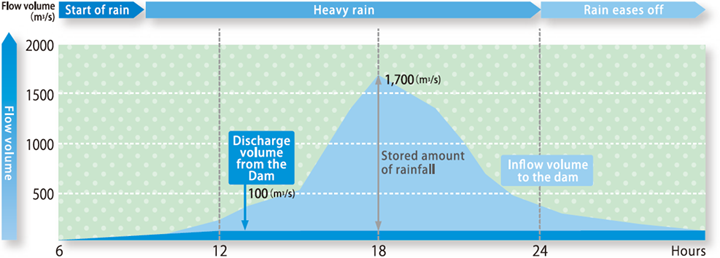 Inflow Water Volumes to Miyagase Dam and Planned Discharge Volumes in case of Flooding
Inflow Water Volumes to Miyagase Dam and Planned Discharge Volumes in case of Flooding
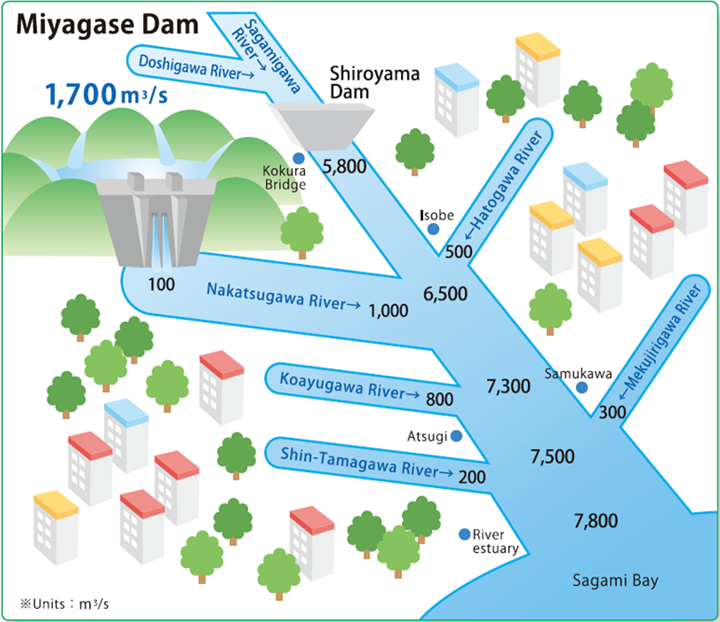 Planned Distribution of Flow Volume in Sagamigawa River
Planned Distribution of Flow Volume in Sagamigawa River

In case of a large-scale flood that occurs once every hundred years on average, water inflow to Miyagase Dam is expected to reach 1,700m³/s. Of that, 1,600m³ will be held within Miyagase Dam. Maximum discharge from Miyagase Dam is set at 100m³/s to avoid flooding of Sagamigawa River, which lies downstream of Nakatsugawa River.
Preserve a Healthy River Environment
Maintains stable level of river water to preserve the river environment
When rainfall is low, natural river inflows decrease and it becomes difficult to maintain a healthy river environment. In such cases, dam water can be effectively utilized. Water stored in the dam is discharged into the river to prevent the river from drying up.
Controlling the river flow at a certain level helps preserve various related ecosystems, including those related to the fish population and vegetation. It also ensures the well-being of people living along the river.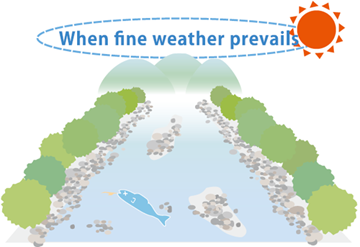

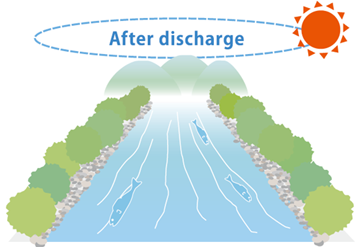
Water levels are reduced, leading to a decline in the population of fish or other creatures in the river. This makes it impossible to maintain a healthy water environment. A water level necessary for the survival of fish and other creatures can be maintained. Stable Control of Water Level in the Sagamigawa River
After Miyagase Dam started operations to maintain normal river functions, the respective low, dry and minimum water levels rose significantly, clearly demonstrating that the dam has had a positive effect on river function.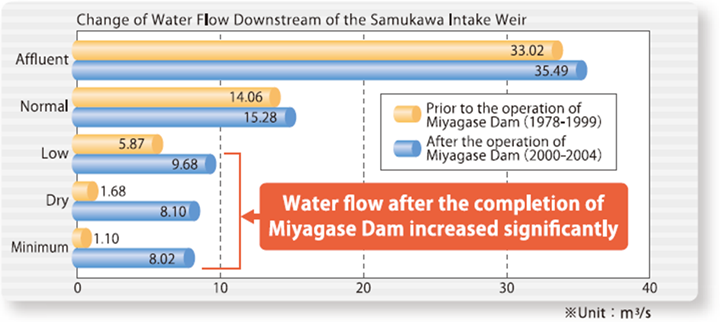
Flush Discharge to Keep Rivers Clean
The section of the Nakatsugawa River downstream of Miyagase Dam suffers from a propagation of algae. "Flush discharge" is therefore conducted to rid the area of such algae. This improves the habitat of the river, enabling fish and other river creatures to enjoy healthy eco-systems.-
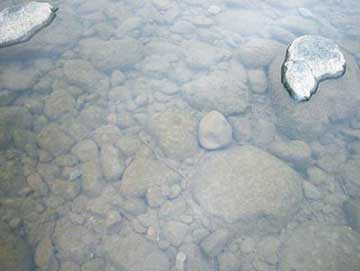 Propagation of algae on the river bed. Water is turbid.
Propagation of algae on the river bed. Water is turbid.
-
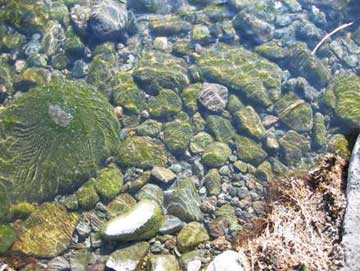 Algae has been flushed away. Water is clean.
Algae has been flushed away. Water is clean.
Store Drinking Water
A major water resource in Kanagawa Prefecture
Water is indispensable to our daily lives and dams store water to supply it as necessary.
Miyagase Dam supplies drinking water to 15 cities, including Yokohama City and Kawasaki City, and seven towns in Kanagawa Prefecture. The maximum water intake downstream of the Nakatsugawa River Confluence amounts to 1,300,000 m³ per day.
Miyagase Dam assumes an important role as a major water supplier in Kanagawa Prefecture, providing drinking water to a vast number of households in the prefecture.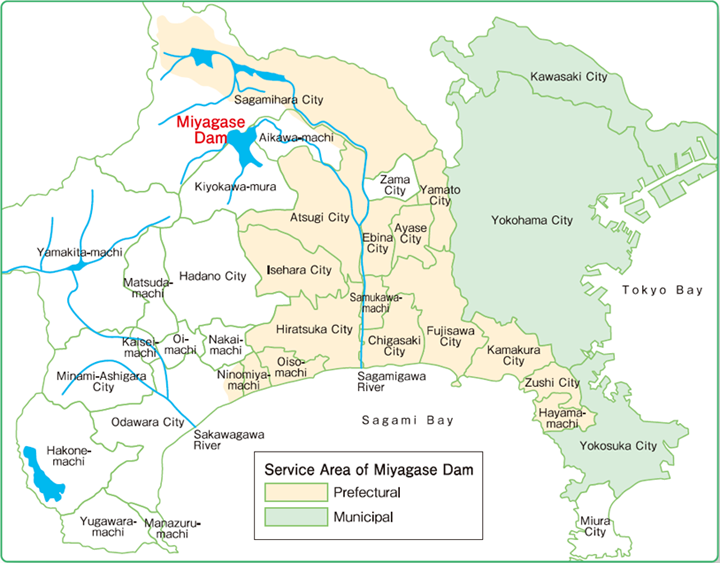
Generate Electricity
Generate hydro-electricity
Electricity is generated using the hydraulic power of Miyagase Dam. The generated electricity contributes to the comfort of our daily lives.
Aikawa Power Station No.1., located immediately downstream of Miyagase Dam, is capable of generating a maximum 24,200kW of electricity, while Aikawa Power Station No.2 downstream of Ishigoya Dam can produce a maximum of 1,200kW. By utilizing the difference in the dams' scales, hydropower is effectively used to generate electricity.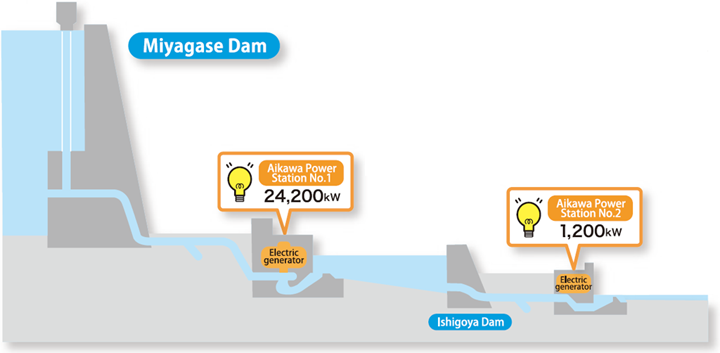
-
